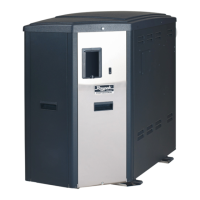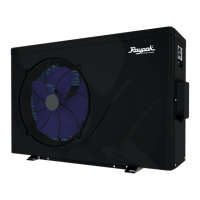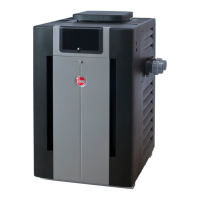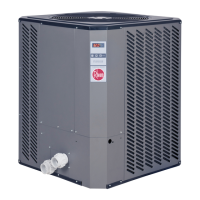36
+ = MORE GAS
–
= LESS GAS
GAS
INLET
F10330
Figure 41. Gas Valve
Visual Inspection
Flames can be observed through the sight glass next to the
At least every three months a visual inspection should be
made.
Electrical
Be sure that electrical service to the heater has proper
overload fuse or circuit breaker protection, wire size and
connections which comply with all applicable codes.
CAUTION: Prior to replacing any component, make
sure that the main gas, power, and pumps are turned
OFF.
valve and the combustion blower.
Locate and close the external manual shutoff valve.
Loosen the external gas union.
Locate and remove front door panel.
gas orifice in place. See the figure above.
Carefully remove the gas orifice and do not misplace
Inspect and/or replace the orifice with the correct
size.
GAS MANIFOLD
PRESSURE TAP
GAS ORIFICE
Figure 42. Gas Train
Combustion Settings
Table K shows the
desired ranges for CO
the instructions from the Adjusting Valve Manifold Pressure
section to make adjustments. Desired CO
for a good reading (fan RPM should not change more than
Fuel Type CO Range (%) CO Max (PPM)
Natural Gas
Propane
Table O. Combustion Settings
NOTE:
Igniter Removal
Locate and remove the top panel.
Locate the igniter in front of the blower and burner.
Locate and disconnect the high tension spark cable
from the igniter.
holding the igniter down.
from the combustion chamber, preferably on both
sides.
Carefully remove the igniter from its location. In order
to remove the igniter without damaging the refractory,
clockwise before lifting it out of the heater.
and ground rods should be uniform and the rods
should not be distorted. Inspect the ceramic insulator
at the base of the spark rod carefully for cracks,
replace the igniter if any defects are found.
Figure 43. Igniter
APPROVED
UNCONTROLLED DOCUMENT IF PRINTED

